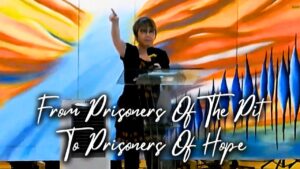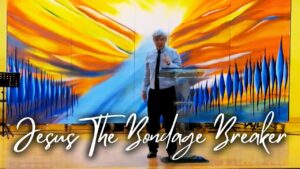Thankfulness and Gratitude
Luke 17: 14- 17
So when He saw them, He said to them, “Go, show yourselves to the priests.” And so it was that as they went, they were cleansed. And one of them, when he saw that he was healed, returned, and with a loud voice glorified God, and fell down on his face at His feet, giving Him thanks. And he was a Samaritan. So Jesus answered and said, “Were there not ten cleansed? But where are the nine?
The story.
While traveling from Galilee to Jerusalem, Jesus encountered the ten lepers who stood at a distance and called out, “Jesus, Master, have mercy on us!” Jesus told them to go see the priests, and they were healed on their way.
The outcome.
All ten lepers left, but only one returned to thank Jesus. Jesus asked, “Were not ten cleansed? Where are the other nine?”
Title: THANKFULNESS AND GRATITUDE.
- The Healing of Ten
- The Other Nine
- The Only One
- The Greater One
Thankfulness and Gratitude:
GRATITUDE is an attitude of appreciation that is more than just feeling thankful. It is a state of being that is rooted in awareness, acceptance, and compassion. It is a lasting emotion that can arise from reflecting on many things in life.
THANKFULNESS on the other hand is an emotion that is usually a response to something specific. Thankfulness is more immediate and situational than gratitude.
I. THE HEALING OF TEN.
In the Israelite community, when a person discovered a rash or skin disorder, he or she had to go to the priest for examination. The priest then determined whether this was a contagious disease and whether the person was to be declared ceremonially unclean. Leviticus 13:45–46. “Now the leper on whom the sore is, his clothes shall be torn and his head bare; and he shall cover his mustache, and cry, ‘Unclean! Unclean!’ He shall be unclean. All the days he has the sore he shall be unclean. He is unclean, and he shall dwell alone; his dwelling shall be outside the camp.”
Leprosy, or tzara’ath, means:
- Punishment for sins committed.
- Divine curse because it was a chronic and incurable disease.
- Social exclusion.
- Illustration of sin’s destructive power.
Jesus had healed several individuals who had leprosy or some type of infectious skin disease (Luke 5:12–14; Mark 1:40–42; Matthew 8:2–3). The 10 men who were part of a leper colony approached Him together. They called out to Him, “Jesus, Master, have pity on us!” Jesus gave the instruction to go show themselves to the priest.
Leviticus 14:1-20 describes the ceremony for cleansing lepers:
– Bring the leper to a priest: The leper must be brought to a priest for examination.
– Prepare the leper: The leper must wash their clothes, shave their hair, and bathe in water.
– Prepare the sacrifice: The priest kills one bird and sets the other free. The priest then dips the live bird, cedar wood, scarlet string, and hyssop in the blood of the sacrificed bird.
– Sprinkle the leper: The priest sprinkles the blood seven times on the leper.
– Present the leper: On the eighth day, the leper must be presented to the congregation at the doorway of the tabernacle. The priest must present the leper and their offerings before the Lord.
– Offer the grain offering: The priest must offer one of the male lambs as a guilt offering.
– Make atonement: The priest must make atonement for the leper before the Lord. The leper is clean.
Luke makes special mention of the fact that the one who returned was a Samaritan, a person despised by the Jews (Luke 17:15). And Jesus expressed disappointment that the other nine had not thought to give praise to God for their healing.
Application: God desires for us to express our thankfulness to Him for all He does in our lives.
II. THE OTHER NINE
“Jesus answered and said, “Were there not ten cleansed? But where are the nine?”
Cornelius a Lapide notes that the other nine lepers rejoiced at their cure, but were self-centered, and so went to the priests purely for the end that they might be “declared to be clean, and restored to the society of men,” and thus they thought little of glorifying Jesus.
The other Nine lepers symbolize the major attitudes of those who walk away after they have received.
Incessant gratitude is a Christian quality that we should develop along the pathway of life. The road to it is not always clear of debris and twists. It often contains roadblocks.
Common roadblocks to gratitude.
- Selfishness.
Out of the womb we come—wanting and whining. We nurture our greed and self-centeredness.
Selfish people snuff gratitude out while they continuously look for the next thing to consume.
- Discontentment
They are people who see everything as a half-full glass. They lack joy. Nothing is worth giving thanks, because nothing is worthwhile.
- Lethargy.
When nothing God does excites us. When this happens, we become numb to the Lord’s goodness and life gets dull. Coldness will hinder your gratitude because God’s gifts will have no emotional stimulation.
- Disappointment.
When we create expectations for God to meet and He gives something else, we are unhappy when He gives it. Disappointment will hinder your gratitude because you cannot appreciate God’s gifts.
- Forgetfulness.
Maybe you desire to be grateful but just forget. It’s very common, and very wrong. Forgetfulness is a symptom of unintentionality. You are not serious about giving God thanks.
- Entitlement.
We train our young ones to believe that they deserve everything they desire. They have little understanding of what it means to receive a gift. People who feel entitled are people who believe whatever God gives them is what they should have.
- Comparison.
With this attitude, God’s gifts to you never match up. They are never enough.
- Blindness.
It is also possible that you simply do not notice what God gives you. Bad circumstances can easily get in the way of good blessings. Blindness will hinder you from seeing the good benefits God has given you.
- Pride.
The arrogance of pride is described by Evagrius Ponticus as “a tumor of the soul, when it ripens and ruptures, it creates a disgusting mess.”
This unhealthy form of pride contains an overpowering need for self-importance and vanity that holds oneself above all else — the law, any person, any faith. Pride, in turn, feeds the state of narcissism, the self-absorption of unsolved ambition and repressed anger that breeds a sense of entitlement and specialness.
III. THE ONLY ONE
“And one of them… returned…”
Not only he was a leper but he also was a Samaritan.
As a leper, he was unclean and a cast out.
As a Samaritan, half-Jewish, half-Gentile race. When the Jews accused Jesus of being a “Samaritan” in John 8:48, they were rudely suggesting that He was a half-breed, born of an unfaithful mother.
But his heart was full of gratitude because he was aware of the presence and goodness of God.
Gratitude is birthed through constant thankfulness. It is more than a momentary feeling, it’s a way of life that can lead to joy, contentment, and a deeper relationship with God and others. It is not limited to favorable situations. It can be practiced in all circumstances, even when things are not going well.
Gratitude is a natural result of understanding who God is. When we understand who God is and what He has done for us, it is natural to be grateful.
Gratitude creates a sense of significance. It can make our lives more significant by helping us appreciate life’s goodness and pay it forward.
Gratitude can enrich relationships. It can create a deep sense of happiness and satisfaction, which can enrich relationships and nurture new friendships.
Gratitude can make you happier and more resilient. It can improve your mood, sleep, and immunity. It can reduce stress and make challenges more manageable.
Application: May we all be aware of the ever-presence of God in all circumstances of life. Let us take note of even the smallest blessing and be thankful so that gratitude will be born in us.
IV. THE GREATER ONE.
Here we see the greatness of God. The 10 lepers received healing before they reached the priest to examine them because they first met the Great High Priest who cleansed them.
Hebrews 4: 14- 16Seeing then that we have a great High Priest who has passed through the heavens, Jesus the Son of God, let us hold fast our confession. For we do not have a High Priest who cannot sympathize with our weaknesses, but was in all points tempted as we are, yet without sin. Let us therefore come boldly to the throne of grace, that we may obtain mercy and find grace to help in time of need.
As Jesus died on the cross, He served as both High Priest and the sacrificial lamb. He offered up a better sacrifice to God and took away sins—fulfilling the priestly duties with perfection and fulfilling the sacrificial system under the old covenant in every way possible in order to please God.
The ceremony for cleansing lepers speaks of Jesus. He is the greater priest who sees our condition. He accepted the dirty, unshaved and unwashed lepers. He was the sacrifice that was prepared. It was His blood that was shed, and it was He who presented us before the Father. He was the lamb offered as guilt offering that atoned us. The 7 steps for the cleansing of lepers was done completely at once.
CONCLUSION:
The law required all lepers to be cast outside the city and Jesus was crucified outside the city so He could bear our leprosy – the punishment, the curse, the separation and destructive power of sin. And it is a reason to be thankful.
We see the magnanimity of God when He was crucified on the cross. Not only the 10 lepers but all sinners avail of the cleansing power of His Blood.
As the Great High Priest, Christ is our redeemer, mediator, intercessor, and advocate with the Father, making a blood sacrifice that enables us to be cleansed from sin.
Today, we should thank Jesus, our Great High Priest. Let our thankfulness for everything He has done create in us a heart of gratitude.





